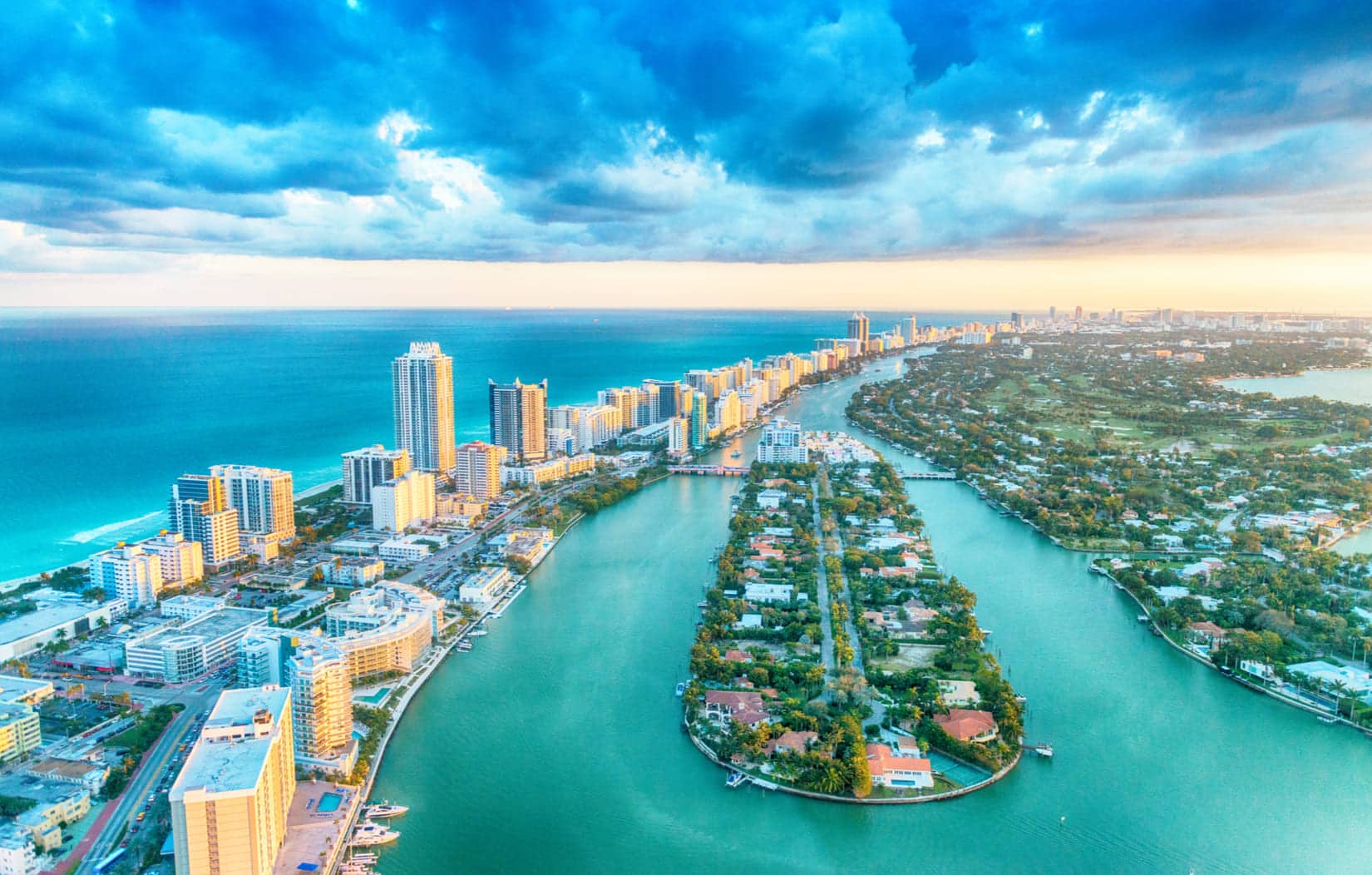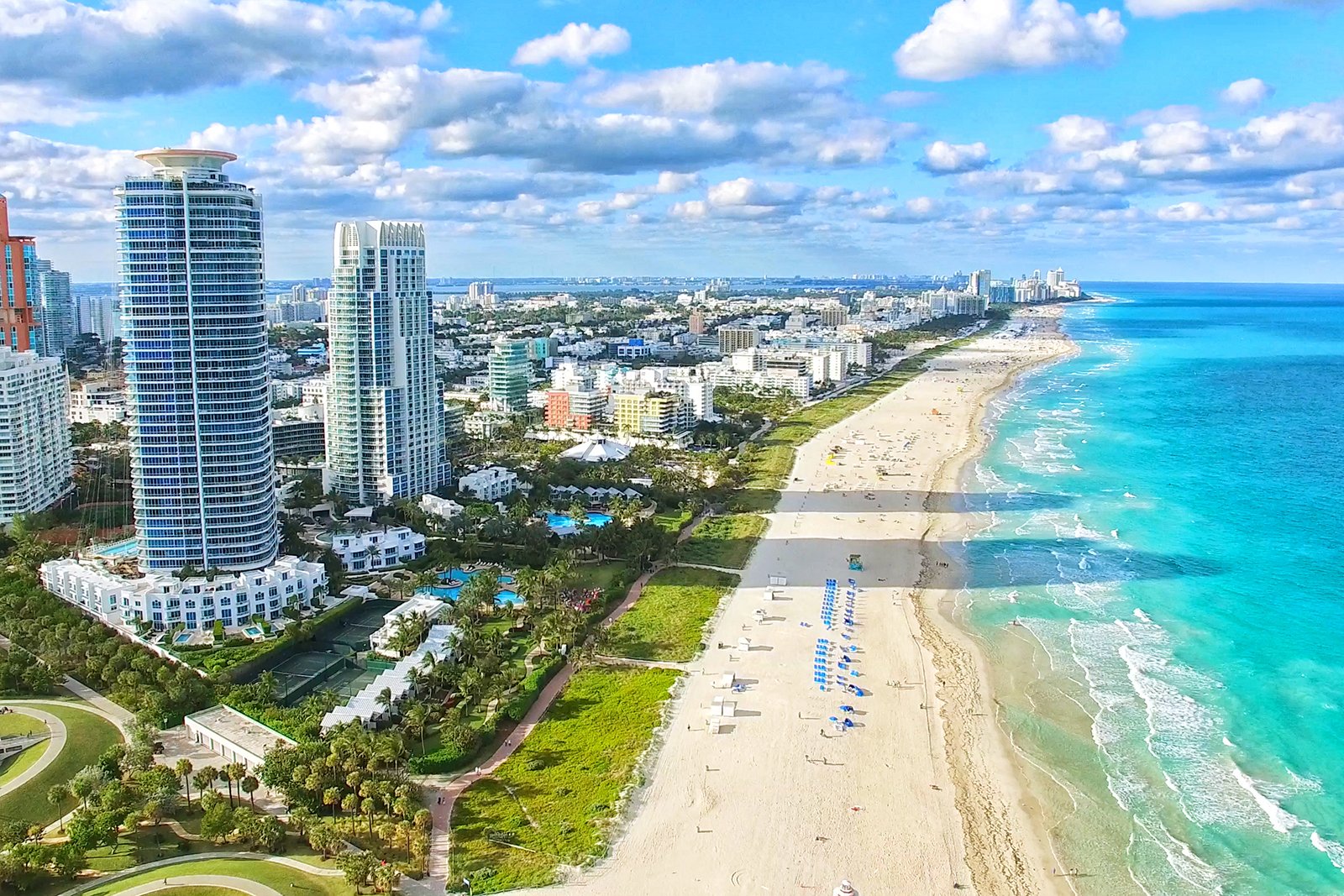
Miami is more than just a city; it’s a sensory experience. It’s the humid, salt-tinged air that greets you the moment you step outside. It’s the pulsating rhythm of Latin music spilling from a storefront in Little Havana. It’s the visual feast of pastel-hued Art Deco buildings lining Ocean Drive, standing as silent witnesses to a century of glamour and change. Known as the "Magic City," Miami is a vibrant, multicultural metropolis where sun-drenched beaches meet cutting-edge art, and laid-back island vibes coexist with high-octane urban energy.
Whether you’re seeking a relaxing beach vacation, a deep dive into art and culture, or an unforgettable nightlife experience, Miami delivers. This comprehensive guide will walk you through everything you need to know to plan the perfect trip, from its storied history to its must-see attractions and practical travel tips.
A Glimpse into Miami’s Past: From Swamp to Metropolis
/south-beach-miami-from-south-pointe-park--florida--usa-1137673992-0dc4c290e2764b178a5ab5be28dbd2d7.jpg)
Related Articles about The Ultimate Guide to Miami: Sun, Culture, and a Vibe Like No Other:
- Chile: A Tapestry of Wonders – Unveiling the Top Attractions and Essential Travel Guide
- Lombok: Beyond Bali’s Shadow – A Symphony of Volcanic Majesty, Pristine Beaches, and Rich Culture
- Toronto’s Grand Stays: Unveiling the City’s Best Hotels and Unforgettable Experiences
- A Traveler’s Guide to Surabaya: Discovering the Soul of Indonesia’s City of Heroes
- Santiago: A Vibrant Tapestry of History, Culture, and Adventure in the Heart of Chile
To truly appreciate modern Miami, it helps to understand its dynamic history. Long before the neon lights and luxury condos, the area was inhabited by the Tequesta people for over a thousand years. The Spanish arrived in the 16th century, but the region remained largely undeveloped swampland for centuries.
The city’s transformation began in the late 19th century, thanks to two visionary figures. Julia Tuttle, a wealthy Cleveland native now known as the "Mother of Miami," purchased a large citrus plantation along the Miami River. After a severe freeze wiped out crops across Florida but left hers untouched, she famously sent a box of orange blossoms to railroad magnate Henry Flagler, convincing him to extend his Florida East Coast Railway south. The railroad arrived in 1896, and the city of Miami was officially incorporated that same year.
The 20th century saw a series of booms. The 1920s brought a land rush and the construction of the iconic Art Deco architecture that now defines South Beach. After World War II, Miami became a popular retirement and tourist destination. However, the most significant cultural shift occurred in the 1960s with the influx of hundreds of thousands of Cuban refugees fleeing Fidel Castro’s regime. They settled primarily in a neighborhood that would become Little Havana, infusing Miami with the language, food, music, and entrepreneurial spirit that are now integral to its identity. The city’s edgy, glamorous reputation was cemented in the 1980s with the TV show Miami Vice, and it has since evolved into a global hub for finance, commerce, art, and entertainment.
When to Visit: Finding Your Perfect Miami Moment
Miami’s subtropical climate makes it a year-round destination, but the experience can vary dramatically depending on the season.
-
High Season (December to April): This is Miami at its absolute best. The weather is idyllic, with average temperatures in the mid-70s°F (around 24°C), low humidity, and plenty of sunshine. It’s the perfect time for beach days and outdoor dining. However, this is also the most crowded and expensive period. Major events like Art Basel Miami Beach (early December) and the South Beach Wine & Food Festival (February) draw huge crowds, so book flights and accommodation well in advance.
-
Shoulder Seasons (April to May & October to November): These months offer a fantastic compromise. The weather is still warm and pleasant, the winter crowds have thinned out, and you can often find better deals on hotels and flights. You might encounter a few more rain showers, but they are typically brief.
-
Low Season (June to September): Welcome to the heart of summer. This period is defined by heat, high humidity, and frequent afternoon thunderstorms. It’s also the peak of hurricane season (officially June 1st to November 30th). While the risk of a major storm is statistically low on any given week, it’s a factor to consider. The upside? This is the most affordable time to visit, with significant discounts on accommodations and fewer tourists at major attractions. If you can handle the heat, it’s a great time for a budget-friendly trip.

Getting There and Around: Navigating the Magic City
Arriving in Miami
- Miami International Airport (MIA): As one of the largest airline hubs in the U.S., MIA is the primary gateway for both domestic and international travelers. It’s conveniently located just a few miles west of Downtown. From the airport, you can take the free MIA Mover to the Miami Intermodal Center, which connects you to the Metrorail (city train), Tri-Rail (commuter train), buses, and a rental car center. Taxis and ride-sharing services like Uber and Lyft are also readily available.
- Fort Lauderdale-Hollywood International Airport (FLL): Located about 30 miles north of Miami, FLL is a popular alternative, often offering cheaper flights on budget airlines. The Brightline high-speed train provides a fast, comfortable, and stylish connection from its Fort Lauderdale station to Downtown Miami in about 30 minutes.
Getting Around Miami
- Car Rental: Renting a car offers the most flexibility, especially if you plan to visit destinations outside the main tourist areas, like the Everglades or Key Biscayne. However, be prepared for heavy traffic, aggressive drivers, and expensive, often scarce, parking, particularly in South Beach and Brickell.
- Ride-Sharing: Uber and Lyft are ubiquitous and are an excellent option for short to medium-distance trips. They are often more convenient and sometimes cheaper than a taxi.
- Public Transportation: Miami-Dade Transit offers a network of options:
- Metrorail: An elevated 25-mile rail system that is useful for connecting areas like Downtown, Brickell, Coconut Grove, and the airport.
- Metromover: A free, automated people mover that loops around Downtown Miami and the Brickell financial district. It’s a fun and practical way to explore the urban core.
- Metrobus: A comprehensive bus network that covers the entire county, though it can be slow due to traffic.
- Miami Trolley: Free trolley services operate in several neighborhoods, including Miami Beach, Downtown/Brickell, Wynwood, and Little Havana. They run on specific routes and are a great way to get a feel for a local area.
- Biking & Walking: Neighborhoods like South Beach, Wynwood, and Coconut Grove are very walkable. For longer distances, the Citi Bike bike-sharing program is a great option, with hundreds of stations across the city.
Where to Stay: Finding Your Miami Base
- For Glamour and Nightlife (South Beach): If you want to be in the heart of the action, South Beach is the place. Home to the iconic Art Deco hotels on Ocean Drive, world-class restaurants, and legendary nightclubs, this is where you stay to see and be seen. Options range from luxurious beachfront resorts like The Fontainebleau and The Delano to chic boutique hotels.
- For Urban Sophistication (Brickell & Downtown): This is Miami’s financial center, a canyon of sleek glass skyscrapers. It boasts a sophisticated urban vibe with high-end shopping at Brickell City Centre, fantastic rooftop bars, and a bustling restaurant scene. It’s well-connected by public transport and offers stunning views of Biscayne Bay.
- For Art and Culture (Wynwood & Design District): For the creative traveler, these adjacent neighborhoods are a dream. Wynwood is famous for its street art and trendy galleries, while the Design District is a hub for luxury fashion and avant-garde architecture. Accommodations here are mostly boutique hotels and stylish Airbnbs.
- For a Laid-Back Vibe (Coconut Grove): Miami’s oldest neighborhood, "The Grove" offers a lush, bohemian, and more relaxed atmosphere. With its bayfront parks, sidewalk cafes, and charming boutiques, it’s a great choice for families or couples seeking a quieter escape.
Top Attractions: The Heartbeat of Miami
- South Beach & the Art Deco Historic District: This is the quintessential Miami experience. Stroll down Ocean Drive to admire the world’s largest collection of Art Deco architecture, painted in a palette of cheerful pastels. Relax on the wide, white-sand beach, people-watch at a sidewalk cafe, and feel the electric energy of this iconic neighborhood.
- Wynwood Walls: Once a collection of neglected warehouses, Wynwood has been transformed into one of the world’s most prominent street art destinations. The Wynwood Walls is an outdoor museum showcasing large-scale murals by top international artists. The surrounding neighborhood is a gallery in itself, with vibrant art covering nearly every surface.
- Little Havana: Step onto Calle Ocho (SW 8th Street) and you’re transported to the heart of Cuban culture. Hear the click-clack of dominos at Máximo Gómez Park (Domino Park), watch master rollers craft cigars by hand, and savor authentic Cuban cuisine at the legendary Versailles Restaurant. Don’t leave without trying a cafecito (a strong, sweet Cuban espresso).
- Vizcaya Museum & Gardens: A breathtaking Gilded Age estate on Biscayne Bay, Vizcaya is a testament to early 20th-century opulence. This Italian Renaissance-style villa is filled with European antiques and decorative arts, surrounded by ten acres of stunning formal gardens and fountains. It offers a peaceful and stunningly beautiful contrast to the city’s modern buzz.
- Everglades National Park: Just a short drive from the city lies a vast, 1.5-million-acre wetland wilderness, a UNESCO World Heritage Site. The best way to experience this unique ecosystem is on an airboat tour, where you can glide across the "River of Grass" and spot alligators, turtles, and a vast array of wading birds in their natural habitat.
- Pérez Art Museum Miami (PAMM) and Phillip and Patricia Frost Museum of Science: Located side-by-side in the scenic Museum Park, these two institutions are architectural marvels. PAMM focuses on international modern and contemporary art, with a special emphasis on the Americas. The Frost Science Museum features a state-of-the-art planetarium, a three-level aquarium, and fascinating interactive exhibits.
Essential Travel Tips for a Flawless Trip
- Pack Light and Smart: Lightweight, breathable fabrics are your best friend in Miami’s humidity. Pack plenty of swimwear, a cover-up, sandals, and at least one stylish outfit for a nice dinner or night out.
- Sun Protection is Non-Negotiable: The Florida sun is intense year-round. A high-SPF sunscreen, sunglasses, and a wide-brimmed hat are essential.
- Stay Hydrated: Drink plenty of water throughout the day to combat the heat and humidity.
- Embrace "Miami Time": Don’t be surprised if things run on a more relaxed schedule. Patience is key.
- Learn a Little Spanish: While not required, knowing basic phrases like hola (hello), gracias (thank you), and por favor (please) is appreciated and reflects the city’s bilingual culture.
- Book in Advance: For popular restaurants, tours, and nightclub entry, making reservations ahead of time is highly recommended, especially during high season.
Miami is a city of captivating contrasts—a place where cultures converge, nature and urbanity collide, and the past is always present. It’s a city that invites you to slow down and savor the moment, whether that’s watching the sunrise over the Atlantic, getting lost in a vibrant mural, or dancing the night away. Pack your bags, bring your sense of adventure, and get ready to experience the electric energy of the Magic City.





